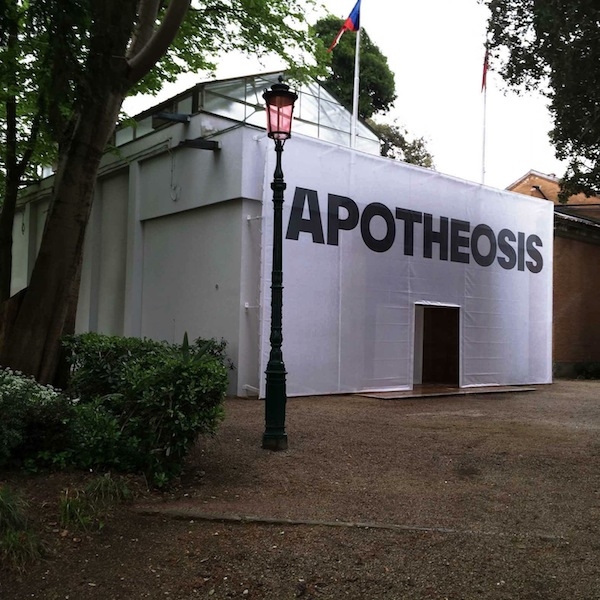ArtReview sent a questionnaire to artists and curators exhibiting in and curating the various national pavilions of the 2015 Venice Biennale, the responses to which will be published daily in the lead-up to the Venice Biennale opening.
Jiří David is representing Czech and Slovak Republic. The pavilion is in the Giardini.
What can you tell us about your exhibition plans for Venice?
My intention is to address the issue of transformation of understanding of notions like nation, home, country, myth, collective and individual memory, identity and politics. The way my art is going to be presented is well thought-through so that a visitor does not leave the exhibition bored, without a visual experience and internal feeling. So that s/he would not become just part of a dry intellectual exercise but rather of a mutually shared emotional interaction.
Are you approaching this show in a different way as to how you would a ‘normal’ exhibition?
First of all, my presence in Czechoslovak pavilion is a challenge vis-a-vis important artists and their opinions. This will be no ‘normal’ exhibition. No ‘typical’ work will be heading there, whether paintings, objects, photos, videos or smart texts. The installation will be site-specific and original, hopefully with understandable meaning.
What does it mean to ‘represent’ your country? Do you find it an honour or problematic?
This question is important to me. I am really concerned, and it´s partly answered by my work for the Venice Biennale. I don´t feel ashamed of being Czech, however, sometimes I even publicly criticise my country. Currently, contemporary art does not enjoy any significant attention, whether public or political, with marginal overall support. Czech Republic is a traditional, classical dead cultural outdoor museum for poorer western European tourists, with increasing number of tourists from China and South Korea. In spite of it, I think there is an art being created here which is comparable to an international one, if interest be. The western cultural — very often arrogant — context is not capable of adopting this art, it only searches for what is close or similar, what it can understand through its education. And that’s not enough.
How are you approaching the different audiences who come to Venice – the masses of artist peers, gallerists, curators and critics concentrated around the opening and the general public who come through over the following months?
Hmm, considering my age and previous experiences, I don’t have any illusions that I’m interesting commercially or otherwise for the Western artworld. I’m not. I am focused on those who come with sensitivity, capable of understanding my message, without any a priori judgments or prejudices. Mutual sharing is precious and delightful. It doesn´t make any difference whether it would be an important curator, gallerist or ‘just’ an amazed passer-by. If he can accept my art, respect it, share it through his professional life or personally, I would be grateful, of course.
What are your earliest or best memories of the biennale?
Well, what a question … smile… Basically, it’s very simple: within the overall chaos of different ideas and efforts, I try to surprise with something simple, but something out of the ‘trend zone’. And that’s always difficult. Anyway, I enjoyably recall being at Venice Biennale /Aperto/ for the first time in 1991 whereby I tried to attract attention just next to the box of Jeff Koons and his Cicciolina… smile …
You’ll no doubt be very busy, but what else are you looking forward to seeing?
In addition to the Czechoslovak pavilion, it would be sunny weather and the feeling of accomplishment. Even though we face unimaginable troubles, together with curator Katarina Rusnakova and other colleagues, if we accomplish it, it will suffice, especially if my friends and part of my family comes over. Simply, it will have to suffice.
How does a having a pavilion in Venice affect the art scene in your home country?
Some ignore and despise it, as they do with any other biennale in the world, but some do respect it. In spite of it, this year, a record number of Czech artists attended the contest for the Venice Biennale. For the first time, an international selection committee chose the winner. I was surprised that it chose my project — and even unanimously. It’s an obligation but also a pleasant feeling. It’s also true that it’s not easy to be with the local art community anymore…as you can imagine… smile.
Read all responses to the Venice Questionnaire 2015 edition published so far
Read all 30 responses to the Venice Questionnaire 2013 edition
Online exclusive published on 9 May 2015.
